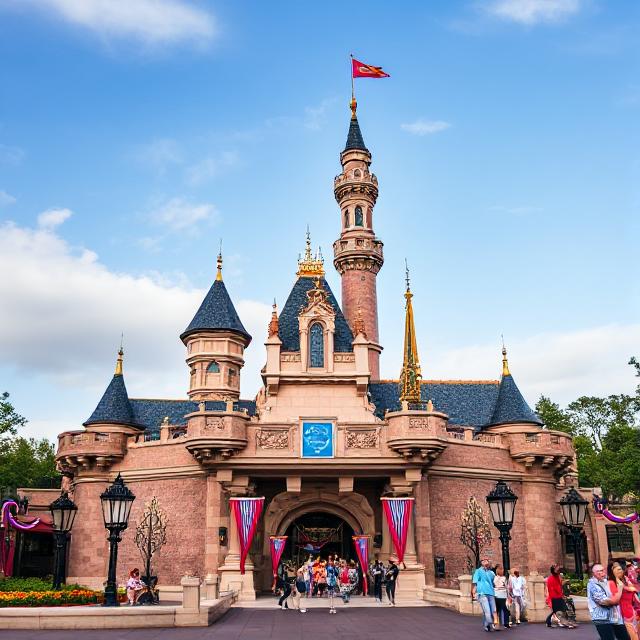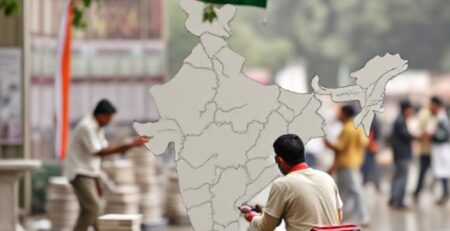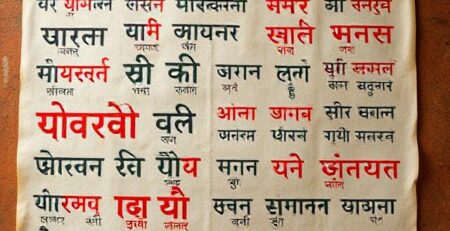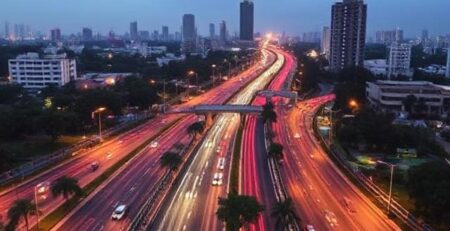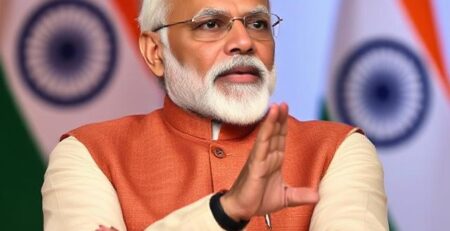India’s First Disneyland Theme Park: Haryana CM Announces Revolutionary 500-Acre Project in Gurugram
In a groundbreaking announcement that promises to transform India’s entertainment landscape, Haryana Chief Minister Nayab Singh Saini has unveiled plans for the country’s first Disneyland-style theme park. This ambitious project, spanning 500 acres in Manesar near Gurugram, represents a significant leap forward in India’s tourism infrastructure and economic development strategy.
Historic Announcement Marks New Era for Indian Tourism
The announcement of India’s first Disneyland theme park in Gurugram comes at a time when the country is actively seeking to position itself as a global tourism destination. Chief Minister Nayab Singh Saini announced that 500 acres of land near Pachgaon Chowk in Manesar have been identified for the ambitious project. The announcement was made following a meeting between CM Saini and Union Minister for Culture and Tourism Gajendra Singh Shekhawat in Delhi.
This strategic location choice reflects careful planning, as Manesar sits at the heart of the National Capital Region (NCR), providing easy accessibility to millions of potential visitors from Delhi, Gurugram, and surrounding areas. The proximity to major transportation networks and urban centers makes this Disney-style theme park project particularly attractive for both domestic and international tourists.
Strategic Location: Why Manesar Was Chosen for India’s Disney Dream
The selection of Manesar for India’s first Disneyland theme park is no coincidence. The site near Pachgaon Chowk lies along KMP Expressway and Haryana Orbital Rail Corridor, ensuring excellent connectivity for visitors traveling from across northern India. This strategic positioning within the Delhi-NCR region offers several advantages:
Accessibility and Connectivity: The location provides seamless access via multiple transportation modes, including the Kundli-Manesar-Palwal (KMP) Expressway and the upcoming Haryana Orbital Rail Corridor. This connectivity ensures that visitors can easily reach the Disneyland-style theme park from major cities across the region.
Economic Hub Integration: Gurugram’s status as a major corporate and financial center means the theme park will benefit from a large population of affluent residents and business travelers. The proximity to India’s corporate capital creates opportunities for corporate events, team building activities, and premium entertainment experiences.
Infrastructure Development: The Manesar region has witnessed significant infrastructure development in recent years, including industrial complexes, residential projects, and commercial establishments. This existing infrastructure provides a solid foundation for supporting a large-scale entertainment destination.
Economic Impact and Tourism Revolution
The announcement of India’s first Disneyland theme park in Gurugram represents more than just entertainment infrastructure; it signals a comprehensive approach to economic development through tourism. Theme parks of this scale typically generate substantial economic activity through multiple channels:
Direct Employment Generation: Large-scale theme parks create thousands of direct jobs across various skill levels, from ride operators and maintenance staff to hospitality professionals and management personnel. The Disney-style park in Manesar is expected to become one of the largest employers in the region.
Indirect Economic Benefits: The ripple effects extend far beyond the park boundaries, stimulating growth in hospitality, retail, transportation, and service sectors. Hotels, restaurants, shopping centers, and entertainment venues typically flourish around major theme parks, creating a comprehensive entertainment ecosystem.
Tourism Revenue: International theme park destinations demonstrate the potential for significant tourism revenue generation. The Disneyland brand recognition, combined with India’s growing middle class and increasing disposable income, suggests strong potential for both domestic and international visitor attraction.
Historical Context: Reviving Haryana’s Disney Dreams
Interestingly, this isn’t the first time Haryana has pursued a Disney-themed entertainment project. The current Disneyland proposal is significantly smaller in scale, requiring only 500 acres compared to the 28,341 acres proposed in 1989. The government has emphasised that the project aligns with modern infrastructure and economic goals, leveraging Gurugram’s status as a corporate hub.
The scaled-down approach reflects lessons learned from previous attempts and demonstrates a more pragmatic approach to theme park development. This focused strategy allows for:
- Manageable Development Timeline: A 500-acre project can be developed more efficiently than massive multi-thousand-acre proposals
- Sustainable Operations: Smaller scale enables better operational control and financial sustainability
- Phased Expansion Potential: The initial development can serve as a foundation for future expansion based on market response
International Positioning: Competing with Global Destinations
The vision behind India’s first Disneyland theme park extends beyond national boundaries. This ambitious project aims to elevate the National Capital Region (NCR) to the ranks of global destinations like Paris and Tokyo. This positioning strategy reflects India’s growing confidence in its ability to compete with established international entertainment destinations.
Global Benchmarking: By referencing established Disney destinations like Paris and Tokyo, the project demonstrates ambition to meet international standards in terms of attractions, service quality, and visitor experience. This benchmarking approach helps set clear expectations for development standards and operational excellence.
Cultural Integration: Unlike imported entertainment concepts, this project has the potential to blend international theme park standards with uniquely Indian cultural elements, creating a distinctive entertainment experience that appeals to both domestic and international audiences.
Regional Hub Development: The project positions Delhi-NCR as a regional entertainment hub, potentially attracting visitors from across South Asia and beyond, similar to how other major theme park destinations serve as regional magnets.
Technical Specifications and Development Details
The 500-acre Disneyland-style theme park in Manesar represents a significant infrastructure undertaking. While specific technical details remain limited, the scale suggests a comprehensive entertainment complex that could include:
Core Theme Park Infrastructure: Traditional theme park elements including multiple themed lands, rides and attractions, entertainment venues, and dining facilities. The 500-acre footprint allows for substantial development while maintaining manageable operational complexity.
Supporting Infrastructure: Essential facilities including parking areas, security systems, utility infrastructure, and visitor services. The location’s proximity to existing infrastructure networks provides advantages for utilities and services connection.
Hospitality Integration: Potential for integrated hotel and resort facilities, following the model of successful international theme park destinations. This integration would support multi-day visitor experiences and increase per-visitor revenue.
Challenges and Considerations
While the announcement of India’s first Disneyland theme park generates excitement, several challenges and considerations require attention:
Licensing and Branding: The use of “Disneyland” terminology raises questions about official Disney licensing and branding agreements. A 500-acre “Disneyland-style” theme park is coming to Gurugram. No Mickey, no Disney deal—just bold branding, big promises, and Haryana’s high-stakes tourism gamble. This suggests the project may be Disney-inspired rather than officially Disney-licensed.
Regulatory Approvals: Large-scale entertainment projects require extensive regulatory approvals including environmental clearances, safety certifications, and operational permits. The complexity of these approvals can significantly impact development timelines.
Financial Viability: Theme park development requires substantial capital investment and careful financial planning. Market research, feasibility studies, and funding arrangements will be crucial for project success.
Operational Expertise: Successfully operating a major theme park requires specialized expertise in areas including ride maintenance, safety management, customer service, and entertainment programming.
Market Potential and Visitor Demographics
India’s growing middle class and increasing urbanization create favorable conditions for theme park development. Several factors support the market potential for India’s first Disneyland-style theme park:
Demographic Advantages: India’s large population of young families represents an ideal target demographic for theme park entertainment. The growing middle class has increasing disposable income and leisure time, creating demand for quality entertainment experiences.
Regional Market Access: The Delhi-NCR location provides access to one of India’s largest and most affluent metropolitan areas, with over 30 million residents within reasonable traveling distance.
International Visitor Appeal: India’s growing reputation as a tourist destination could attract international visitors seeking unique entertainment experiences during their Indian travels.
Future Implications for Indian Entertainment Industry
The development of India’s first Disneyland theme park could catalyze broader changes in the Indian entertainment industry:
Industry Standards: A successful international-standard theme park could establish new benchmarks for entertainment infrastructure and service quality across India.
Investment Attraction: Success could attract additional international entertainment companies to invest in Indian projects, accelerating industry development.
Employment Sector Growth: The entertainment and tourism sectors could experience significant employment growth, creating new career opportunities and skill development needs.
Regional Development: The project could inspire similar developments in other Indian states, promoting regional tourism and economic development.
Conclusion: A New Chapter for Indian Entertainment
The announcement of India’s first Disneyland theme park in Gurugram represents a significant milestone in the country’s entertainment and tourism development. While challenges remain, the project’s strategic location, government support, and market potential create a foundation for success.
The 500-acre development in Manesar could serve as a catalyst for broader transformation in Indian entertainment infrastructure, potentially inspiring similar projects across the country. As India continues to develop its tourism industry and entertainment offerings, this Disney-style theme park project represents both ambition and opportunity.
The success of this venture will depend on careful execution, appropriate licensing arrangements, and effective management of the complex challenges inherent in large-scale entertainment development. However, the potential rewards—economic growth, job creation, tourism development, and enhanced international profile—make this a project worth watching closely.
For Indian families and entertainment enthusiasts, the prospect of experiencing Disney-style entertainment without international travel represents an exciting development. As the project moves from announcement to implementation, it will be interesting to observe how India’s first Disneyland theme park shapes the future of entertainment in the world’s most populous nation.


